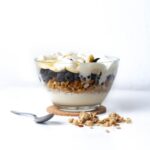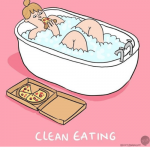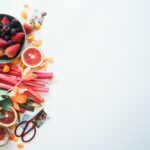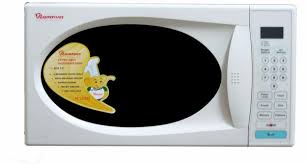I remember the days when we prepared foods without microwaves, we used firewood, the stove and those who were privileged to have gas they were found to be rich. Today, the evolution has gone to instant cooking and warming of food without having to wait for hours before it is ready. Microwaves have become the norm in many kitchens in Kenya, at home, restaurants and even in offices. But just how safe is the food you heat in the microwave? What are the dangers you expose yourself to when using it? How best to use the microwave? These are the many questions Kenyans and people using the microwave keep asking.
This blog is all about the facts, the myths and the misconceptions about this device that has become somehow inevitable to use.
In the first place it is vital to understand just how does this device work?
Microwave oven uses electromagnetic waves called micro-waves to heat food. No wonder the name of the appliance is; microwave oven. The micro-waves oscillate at a very high speed, normally 2450 times per second.
When food is placed in a microwave oven, various food ingredients behave differently. The main ingredient that enables food to be heated by micro-waves is water. The higher the water contents in food, the faster the heating rate. Water in molecular level behaves exactly like a magnet. Water has two oppositely charged ends due to presence of positively charged 2 Hydrogen atoms and a negatively charged Oxygen molecule. Therefore, water in food behaves like a magnet. If a bar magnet is held above another bar magnet, and you rotate the held magnet, the other one also rotates. Similarly, due to two different poles in water, when micro-waves oscillate the water molecules rotate. This is because the negatively charged end of water is attracted to positively charged end of micro-wave, while the positive end of water is attracted to the negative charged end of micro-waves.
The micro- waves rotate at extremely high speed of 2450 time per second. This means for every second a micro-wave rotates, the water molecule also rotates 2450 times. This extremely high rotation rate causes water molecules to collide with each other at very fast rate. This creates friction between water molecules. This friction generates heat. The heat flows through the food by conduction, convection or radiation. Therefore food warms up. That is simply how microwave heats food.
Facts:
You Can’t Heat Oils in a Microwave
Oils such as olive oil do not heat well in microwaves because their molecules lack the polarity found in water. It’s also true that frozen butter is hard to thaw in a microwave, because the bulk of the substance is oil, and the portion of water present is in the form of ice, which keeps the molecules locked up in crystal form, making oscillation more difficult.
Some foods explode or generate sparks when heated in microwave ovens.
Foods that explode when heated in a microwave include eggs. So, they should not be heated in a microwave.
Boiling a Cup of Water in a Microwave Can Cause It to Explode
one potential danger of microwave ovens is getting scalded by over heated water. What can happen is that when plain water is heated in a microwave in a clean ceramic or glass container for too long, it can prevent bubbles from forming, which normally cools it down. The water can become superheated, past its boiling point. So when it is disturbed, say by moving it or dropping something in it, the heat releases violently, erupting boiling water out of the cup.
To avoid this risk heat water only the minimum amount of time needed. Or place a wooden spoon or stick in it (you should be fine with a metal spoon too, as we discussed above. Don’t use a metal fork though, which could spark.)
Myths:
Metals Get Dangerously Hot in Microwaves
Metals reflect microwaves, whereas plastic, glass and ceramics allow them to pass through. That means metals don’t appreciably heat up in a microwave oven. However, thin pieces of metal, such as foils or the tines of a fork, can act as antenna, and the waves can arc off them, forming dramatic sparks.
Microwave Ovens Cook Food from the Inside Outside
Although many people believe this to be the case, microwaves actually work on the outer layers of food, heating it by exciting the water molecules there. The inner parts of food are warmed as heat transfers from the outer layers inward. This is why a microwave can only cook a big chunk of meat to a depth of about one inch inward.
Micro-waves leak through the glass door?
No. The glass door helps to see inside the oven while it has a mesh to prevent micro-waves from leaking out.
So what to do?
If you use a microwave:
- Don’t heat food in plastic.
- Make sure food reaches 160 degrees F in all areas (you have a food thermometer, don’t you?).
- Cover food to help ensure uniform cooking.
- Allow the food to sit a few minutes after microwaving.
- Microwave food only as long as necessary, with little to no cooking water.
If you don’t use a microwave:
Continue to heat food over gas, stove, jiko or any other means since you exempt yourself from the risk of losing food nutrients, causing some illnesses especially IF your model leaks radiation when heating or cooking food.
Go check whether your microwave leaks radiation by:
- Find a fluorescent tube or bulb
- Darken the room where the microwave sits
- Hold the bulb against the edges of the microwave ovens door when the oven is in use. While normally it is not recommended to use the microwave with nothing inside it, in this short experiment, it is best not to add anything to the oven.
- Check for a reaction. If there is microwave leakage occurring, the bulb will glow.
From here you know what to do! Discard your microwave or have it fixed!









